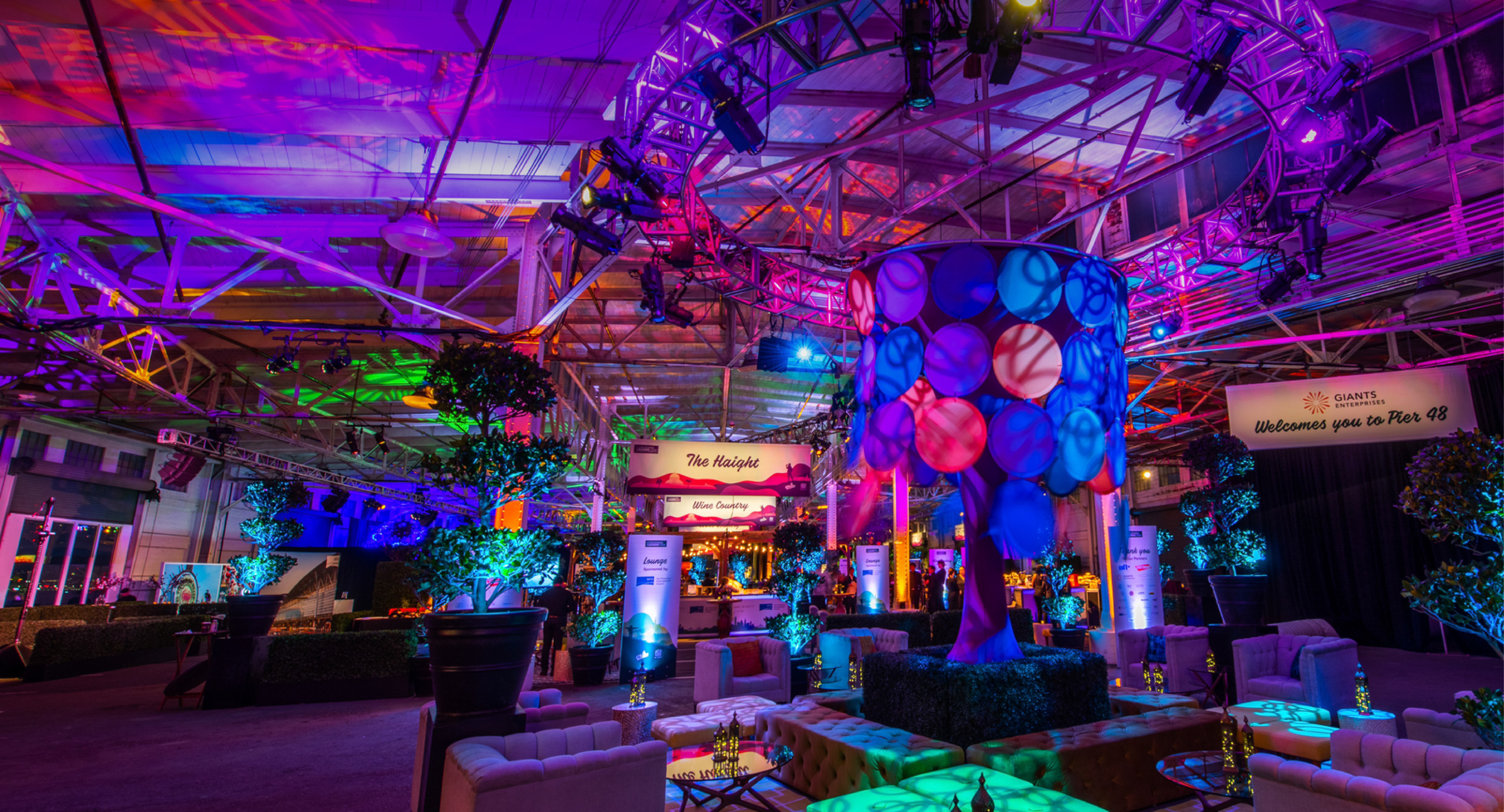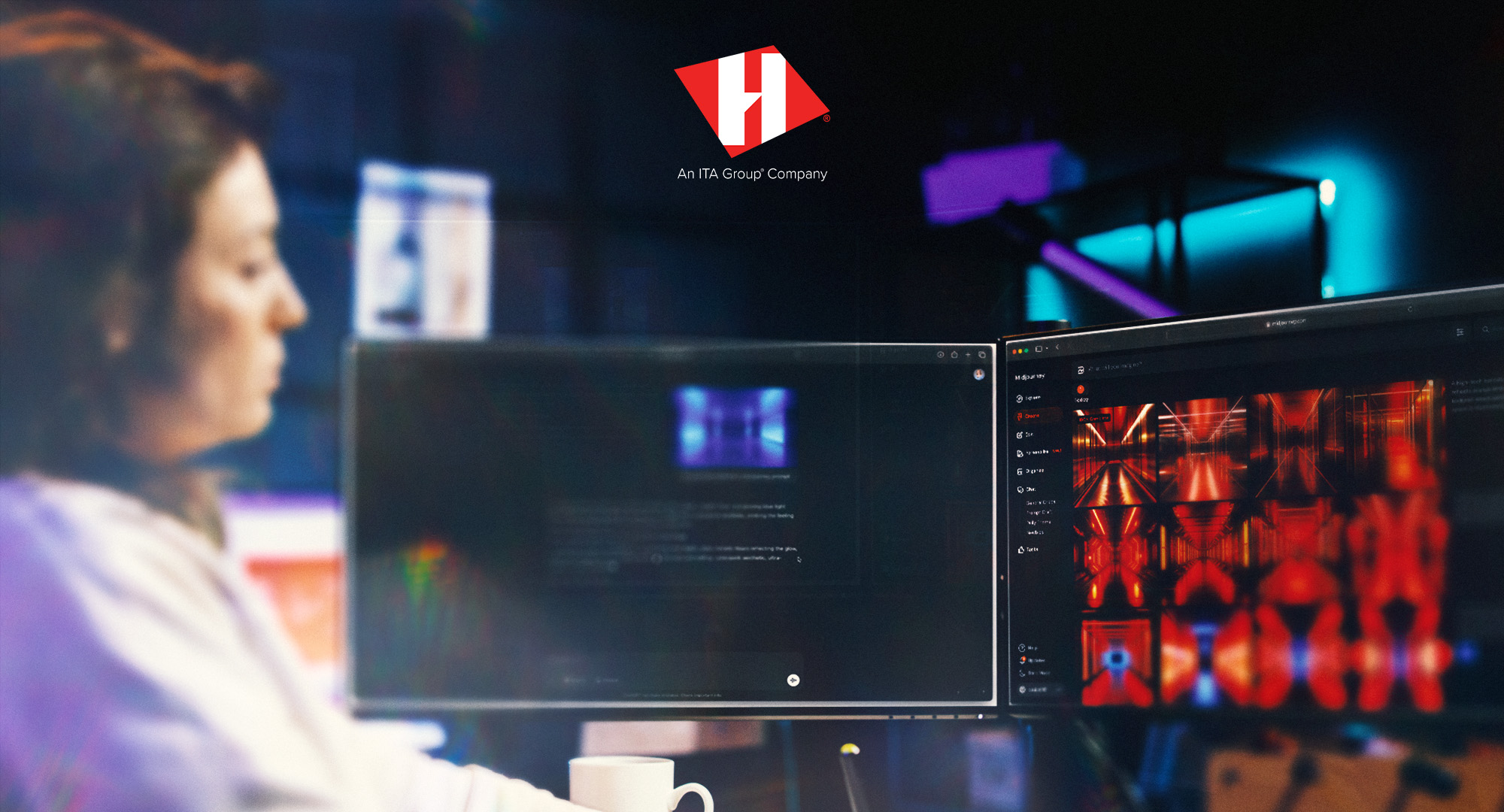Going Green: 6 Ways To Make Your Event More Sustainable
Friday August 21, 2020
5 Min Read
Sustainability continues to be a top priority for future-focused companies in the events industry. With the Natural Marketing Institute recently reporting that 58 percent of United States consumers consider a company’s impact on the environment when making purchase decisions, it’s more important than ever to play a proactive role in developing best practices to meet these consumer demands.
Thinking about environmental impact doesn’t start on a show site—it begins during the earliest stages of the pre-production process. Here are a few suggestions for how to make your next event more sustainable, while also making it something you and your client can be proud of for years to come.
Reduce, reuse and recycle
Over 400 cities across the US ban or tax single-use plastic bags, encouraging shoppers to bring their own reusable bags. The idea of moving away from single-use items is something we can follow with event construction. Re-think your designs with an eye toward multi-year usage. It’s not only a long-term solution for sustainability, but it’s also a cost savings to you and your clients.
Another strategy to consider is to incorporate salvaged materials and repurposing wherever possible. We believe in “designing for disassembly,” and coordinating the design schedule with the show schedule, to allow for reuse of set walls, platforms and lighting grids so that items can easily be repurposed and materials easily recovered.

And for materials that can’t be re-used or reduced from the outset, donate them to a local organization that can use them to help people in need.
Use green materials for signage
Though not always thought of in this context, vinyl banners are composed of polyvinyl chloride (PVC) and are considered another form of single-use plastic onsite unless reused or donated.
The use of eco-friendly digital signage saves resources.
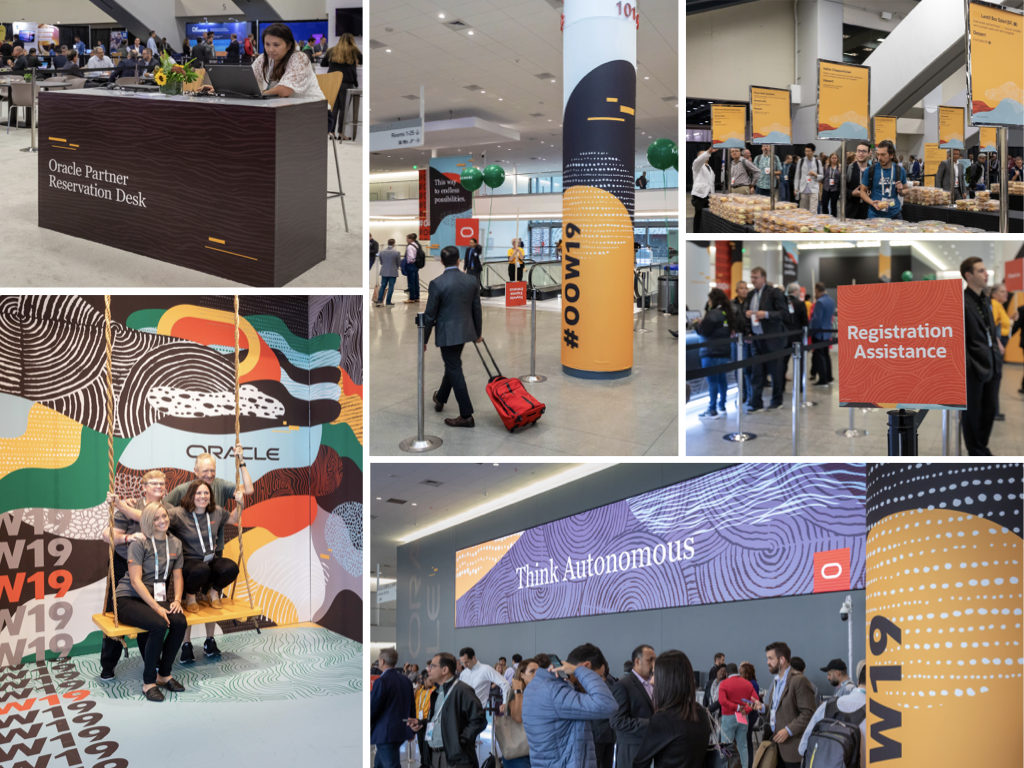
For your next event, strive to use substrates that are 100% recyclable and rely on infinitely recyclable aluminum pipes which are necessary for signage installation.
LED lighting
Sustainability doesn’t always mean building materials—it also means energy. Event teams have a responsibility to understand the steps they can take in order to reduce their energy footprint and make things more efficient.
Depending on your event type, the carbon footprint can vary, but from generator shutdowns to walkable events and green-energy destinations, there are numerous ways, big and small, to save energy and resources.
It starts with lighting. LED bulbs consume between 85% and 90% less electricity. Additionally, they produce virtually zero heat, which lowers your cooling costs.
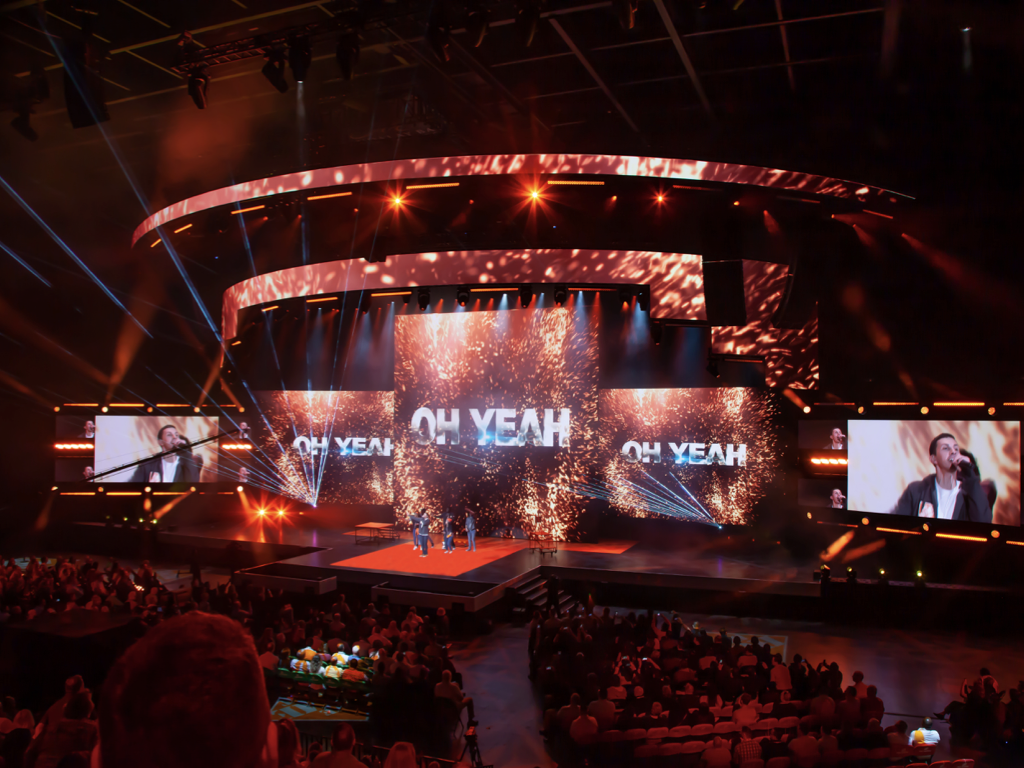
Reduce the need for attendee transport
Environmentally, a walkable event neighborhood can have added benefits for your attendees, as well as being a great “green energy” option. By bringing attractions and activations closer to the attendees, you reduce the need for attendee transport, but also build a sense of immersion for attendees.
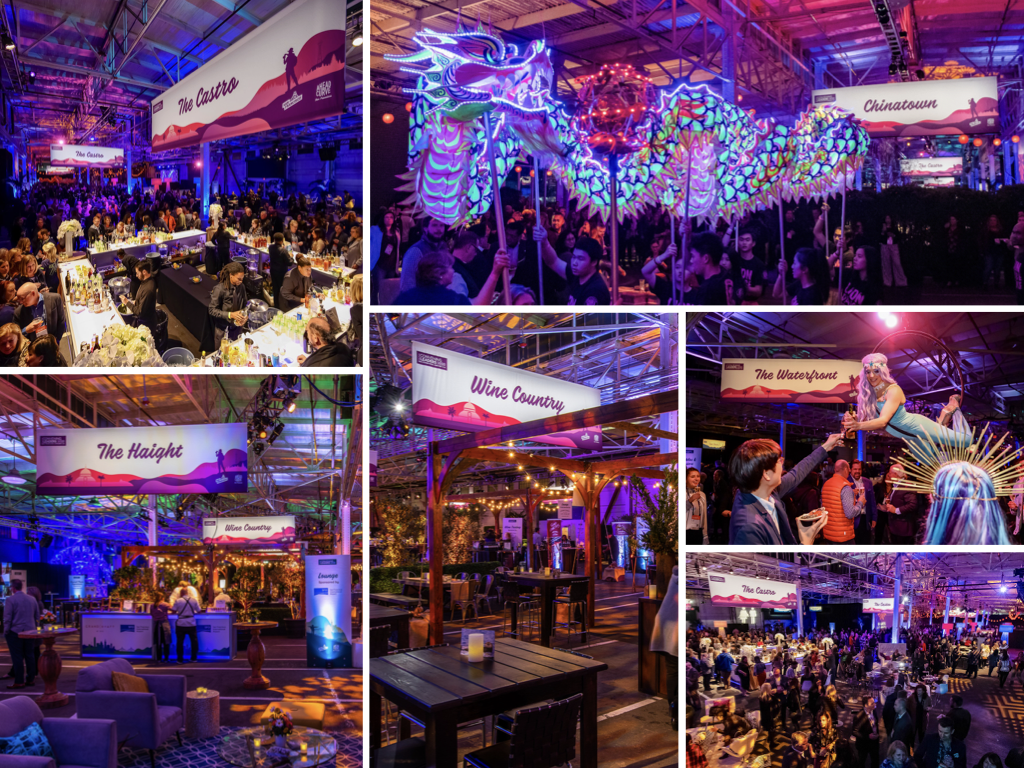
For events where a walkable neighborhood might not be an option, consider choosing a transportation provider that is able to access local, new and fuel efficient vehicles.
Encourage ride-sharing
And if attendees are local to your event, the integration of transit into event transportation is another way events can save energy. Statistics show that encouraging transit for local commuters can save approximately five kilograms of carbon per trip. For a 10,000 attendee festival that adds up to 100 metric tons!
A prime example of an energy reduction option that often gets overlooked by event production teams is ride-sharing.
Ride-sharing services provide a positive societal impact with respect to congestion, pollution and energy consumption, and partnering with a ride-sharing company can be a great way to promote your event for attendees and reduce costs for your client.
Incorporate ride-sharing zones into your transportation planning as a way to encourage shared transportation by attendees.
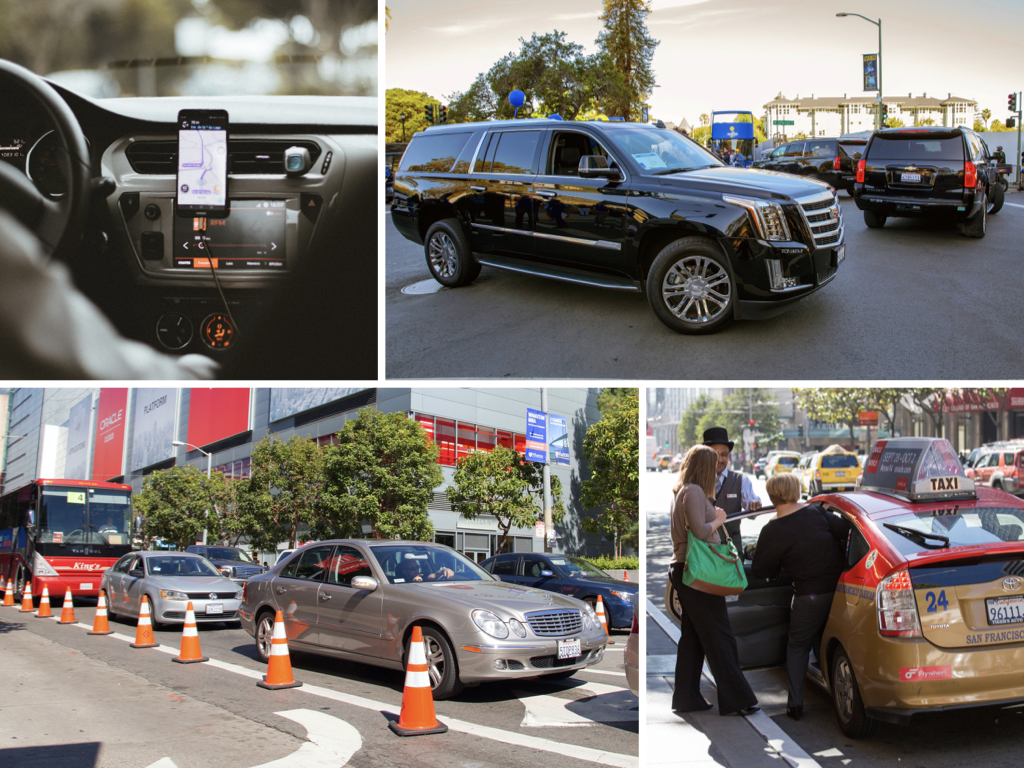
Cut down on food and beverage waste
Finally, the largest issue facing event companies and marketers alike, food and beverage waste. The good news is, if people are given the option to reduce their waste, especially if it’s as easy and efficient as it is when they’re not reducing their footprint, they’ll not only participate in it – they’ll be excited by it!
And to be a frontrunner of sustainable events, it’s important to take the following into consideration: sourcing food responsibly, reducing food and beverage waste, conserving resources and inspiring attendees to do more.
Aluminum, glass, steel, and plastic cans and bottles should be collected in designated containers with clear signage. Consider providing a number of waste stations including composting, recycling and landfill bins, with signage depicting which types of materials attendees should place in each bin.
Placing a well-marked recycling container next to every trash container, even those for vendors, makes recycling as convenient as trash disposal.
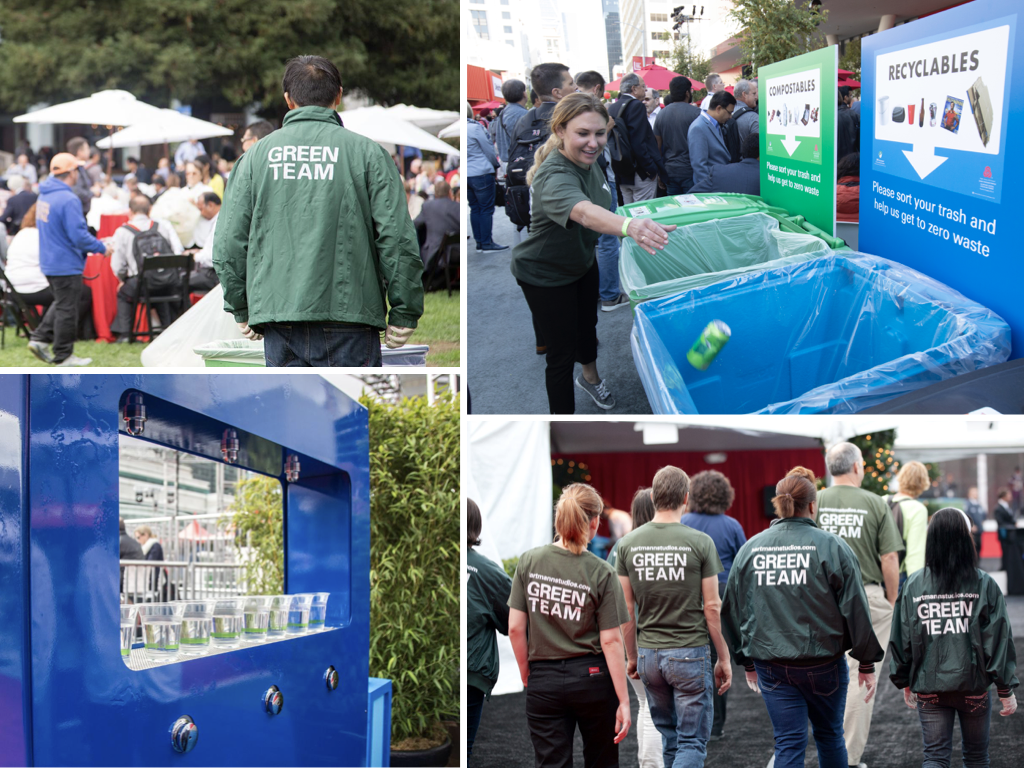
Thankfully, it’s becoming a world-wide trend, yet some events still prefer single-use plastics for attendees. Strive to eliminate plastics like service ware, straws and containers for your event.
One effective way to battle a huge waste producer is to limit the use of plastic water bottles. Implementing filtered water distribution areas allow attendees to re-hydrate without adding irresponsible waste to what is already a world-wide issue.
And as always, when possible, the donation of unused food and materials to local nonprofits, charities, and global organizations sends a tremendous message that your clients not only care about their footprint, but are actively trying to make the world a better place.
Go green with Hartmann Studios
We’re proud of the various ways our Hartmann Studios team continues to help our clients leave a lighter footprint at the events. Join us as partners in sustainability as we set the industry standard for environmental responsibility when it comes to your next event.
Read more stories
View AllAll Posts
4 Ways Environmental Designers Support Creative Event Production
Event design draws us out of our everyday environments. Dynamic displays, scenic builds and dramatic stages capture the audience’s attention. Customized spaces come together thanks to the behind-the-scenes talents of environmental designers. These solution-oriented event production experts believe great event design shouldn’t just look incredible. Thoughtful design elements open minds and promote interaction. Here are...
4 Min Read
All Posts
Elevating Event Production with AI Tools
As artificial intelligence (AI) emerges as a redefining force in creative event production, curiosity is key. Experimenting with prompts helps Hartmann Studios’ production designer, Greg Sullivan, leverage industry-disrupting tools to inspire and streamline his work. He’s defined his dynamic career around constantly learning to meet the next wave of technological advancements. In the mid-1990s, when...
5 Min Read
All Posts
Engaging Main Stage Production with Jayne Samuels
What you need to know Jayne Samuels’ background as a performer informs her approach to event production. A former dancer, she embraces the complex choreography of staging corporate events as a fun, fast-paced challenge. As an executive keynote producer, Jayne leads dozens of team members toward achieving event visions that entertain and inspire audiences. She...
5 Min Read

